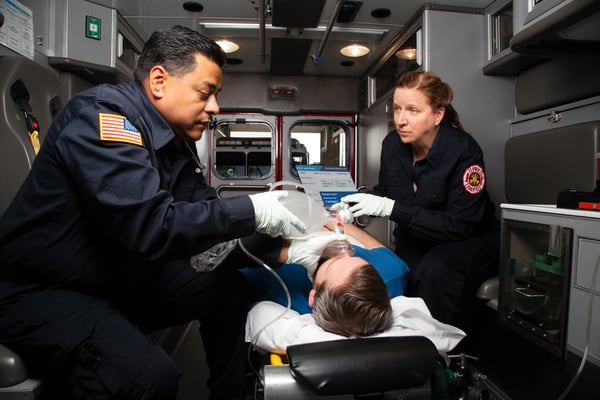News Alert: New ePCR Integration Simplifies EMS Data Management and Enables Better Care Coordination
Compliance in EMS is Going to the Dogs!
There’s a great cartoon with a dog and his owner
Was this information valuable?

There’s a great cartoon with a dog and his owner. The owner says, “Max, you’re such a good dog! You’re a pretty boy. I love you, Maxie! We’re going to have fun today. We’re going shopping, and then we’ll stop at Grandma’s house. Won’t that be fun, Max? Want to go for a ride? Are you ready?”
The next part of the cartoon shows what the dog heard, “Blah, blah, blah, blah, RIDE.”
What Happens if My EMS Agency Ignores Compliance?
That cartoon sums up how many of us feel about compliance. We hear lots of words and we hear them all the time. “Blah, blah, blah, COMPLIANCE, blah, blah, blah, FRAUD PREVENTION, blah, blah, blah.” The difference between those of us in healthcare and Max the dog is that Max will actually get the reward of the ride in the car. It doesn’t matter if Max is prepared or not. For ambulance providers, however, without compliance, we get no reward. What’s that reward? The money we deserve and the ability to keep it. If providers and billing companies do not have an active, practical, real-life functioning compliance program in place, everything is risked – reimbursement, the ability to operate and sometimes even the community you serve (should a provider ever get prohibited from participating in Medicare).
But the weight of compliance feels heavy. And there are so many words out there to frighten or deter us. Words like the Office of Inspector General (OIG) is now targeting ALS-1 Emergencies for overbilling, lack of medical necessity documentation and missing patient signatures. Other words like non-emergency transports continue to be a target of fraud and abuse investigators. Words like the ambulance industry does not have the best billing practices. How do you operate in a world where the words swirl around you constantly? You need a plan.
Create a Plan that Follows the 7 Basic Elements of Compliance
The Office of Inspector General has two documents which help ambulance companies address compliance. The first document (available here) is Compliance Guidance for Ambulance Suppliers and the second document (click here) is Compliance Guidance for Third-party Billing (which has valuable information whether you do billing in-house or outsource your billing). It does not have to be difficult to establish a compliance plan.
There are seven basic elements of compliance as outlined by the OIG:
- Implement written policies, procedures and standards of conduct;
- Designate a compliance officer and compliance committee;
- Conduct effective training and education;
- Develop effective lines of communication;
- Enforce standards through well publicized disciplinary guidelines;
- Conduct internal monitoring and auditing; and
- Respond promptly to detected offenses and developing corrective action.
You are probably already following most of these steps, but you may not have formalized the process into a compliance plan. Look at what you have in place and see where you need to supplement or enhance your existing policies. If you do not have a compliance plan currently in effect, make it a top priority to develop and implement a plan as soon as possible.
Once a plan is in place, do a check of your staff – does everyone know:
- Who the compliance officer is?
- How to contact Compliance?
- How to report a concern?
- The consequences of compliance violations?
- Where the compliance plan is located and how to access?
Also, make sure you stay on top of the plan to make sure it’s still a viable document. Here’s what you can do:
- Mark calendars to do an annual review of compliance plan
- Check to see - do the policies and procedures outlined in your compliance plan actually mirror the way business is conducted on a day-to-day basis?
- Adjust and update compliance plan
Remember, your compliance plan must live and breathe every day to be effective. With a good compliance approach, the words swirling around you will no longer cause as much concern.
Let us know if we can help!
Related Posts
How STAT MedEvac Connected Device, Software, and Data Technology To Enhance QA and Elevate Care
Podcast: 4 Ways ePCR Software Can Relieve EMS’ Biggest Headaches
ZOLL Pulse Blog
Subscribe to our blog and receive quality content that makes your job as an EMS & fire, hospital, or AR professional easier.
ZOLL Pulse Blog
Subscribe to our blog and receive quality content that makes your job as an EMS, fire, hospital, or AR professional easier.




